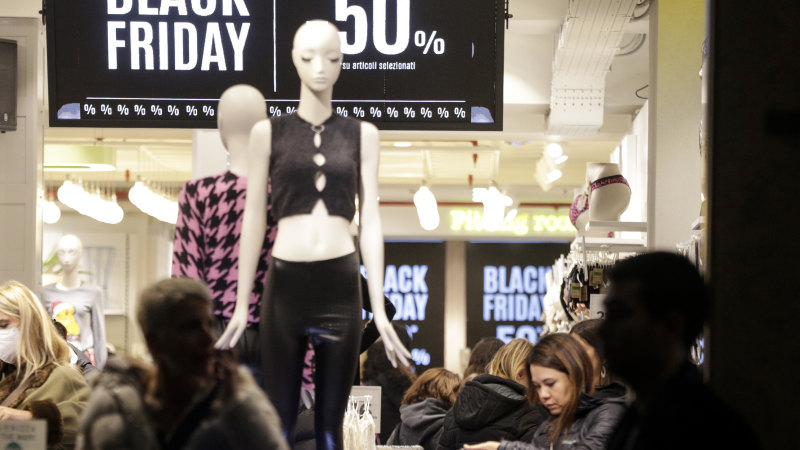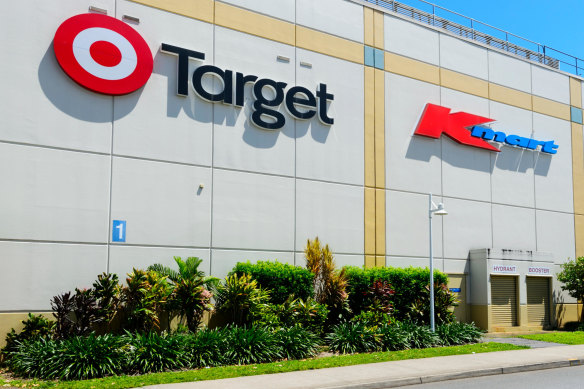Kmart, Big W win the battle for bargain hunters in sales season

Save articles for later
Add articles to your saved list and come back to them any time.
Discount department stores such as Kmart and Big W that marked down essentials were the winners in the Black Friday sales battle for shoppers, in a bargain-hunting trend that could extend to post-Christmas sales.
Spending data shows that shoppers eager for bargains veered away from department stores and luxury items, and focused their spending on discount retailers and essential, such as baby items and pet goods, with cost-of-living pressures still biting ahead of Christmas.
Shoppers increased their spend at discount department stores over the Black Friday sales.Credit: Alamy
While spending often falls off after Christmas, Commonwealth Bank chief economist Stephen Halmarick said the allure of bargains for both essentials and discretionary items could encourage shoppers to stock up in the Boxing Day sales as well.
“Essential spending usually falls after the ‘gift giving’ period, however, given consumers are clearly seeking sales bargains for both essential and discretionary items, Boxing Day sales could also see a similar trend with a larger share of essential spending,” he said.
CommBank iQ shows showed spending on department stores such as David Jones and Myer fell slightly by 0.7 per cent compared to last year, while spending on luxury items dropped by 4.9 per cent.
Instead, shoppers turned to discount retailers such as Target, Kmart and Big W, increasing their spend on by 3.2 per cent. Spending on general retail including baby items, online marketplace, pet goods and cosmetics rose by 5.1 per cent.
“The increase we’ve seen in spending at discount and variety stores in November is partly explained by Christmas and holiday shopping, with discretionary spend up 1.9 per cent,” Halmarick said.
“However people are also using the sales to stock up on essentials – with essential spending edging up 0.3 per cent.”
Wade Tubman, head of innovation and analytics at CommBank iQ, said spending growth has been strong compared to the previous year for those discount department stores as well as online marketplaces.
“People are clearly making choices about where they spend, and they are opting for more affordable options,” he said.
Young shoppers avoided the sales in greater numbers and significantly reduced their spending compared to last year.
The figures showed 18 to 24-year-olds reduced their in-store spending by 10 per cent and their online sales purchasing by 9.4 per cent compared to last year’s Black Friday weekend.
“While younger Australians spent less across the board, this was particularly true for department stores as well as luxury and apparel, all which saw significant drops,” Tubman said.
The Gen Z department store spending plunged 19.7 per cent, and spending on luxury brands fell 18.3 per cent. Young Australians also reduced their clothing spend by 14.8 per cent.
“Consumers need to make a choice about where their dollars go and we are continuing to see younger people being thrifty to prioritise experiences over goods,” Tubman said.
But Tubman said spending on entertainment across all age groups remained strong, and was 22.9 per cent higher than the same period last year.
“This is consistent with our overall cost-of-living pressure insights where Australians have continued to prioritise experiences over goods even in times of increasing living cost pressures,” he said.
“Whether this is cinema vouchers purchased as presents, or ticketing events, Australians continue to divert their wallet to experiences.”
Cut through the noise of federal politics with news, views and expert analysis. Subscribers can sign up to our weekly Inside Politics newsletter.
Most Viewed in Politics
From our partners
Source: Read Full Article
